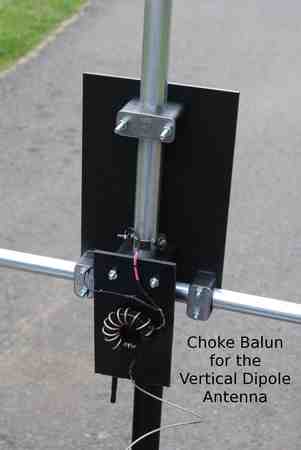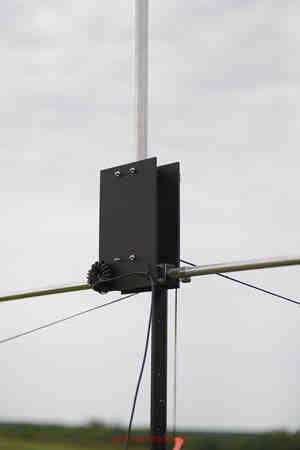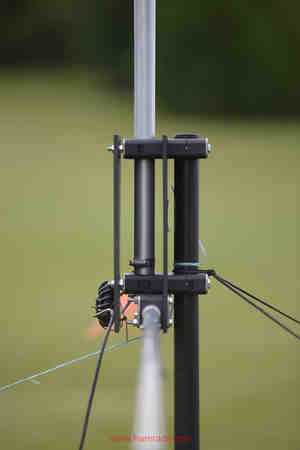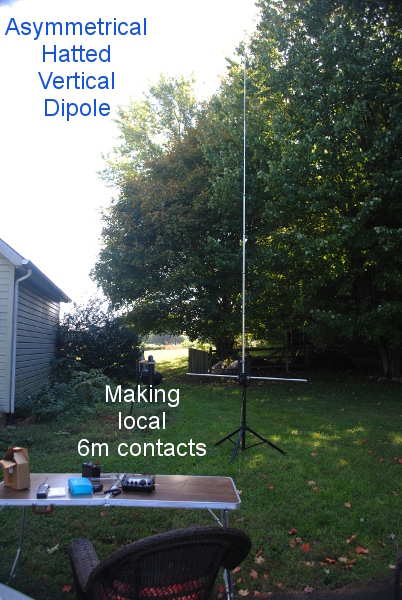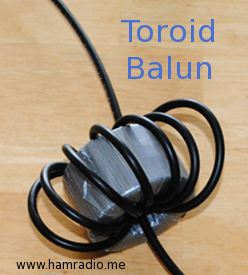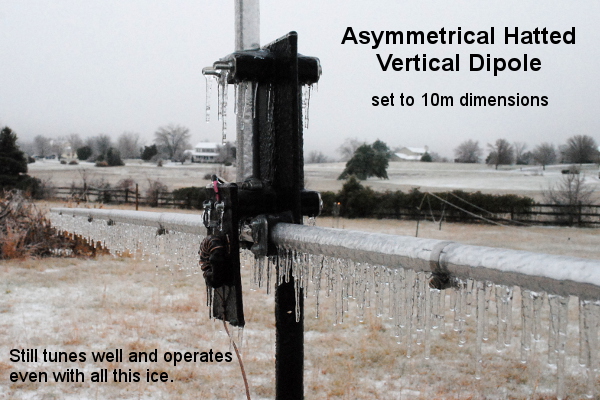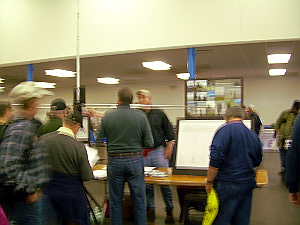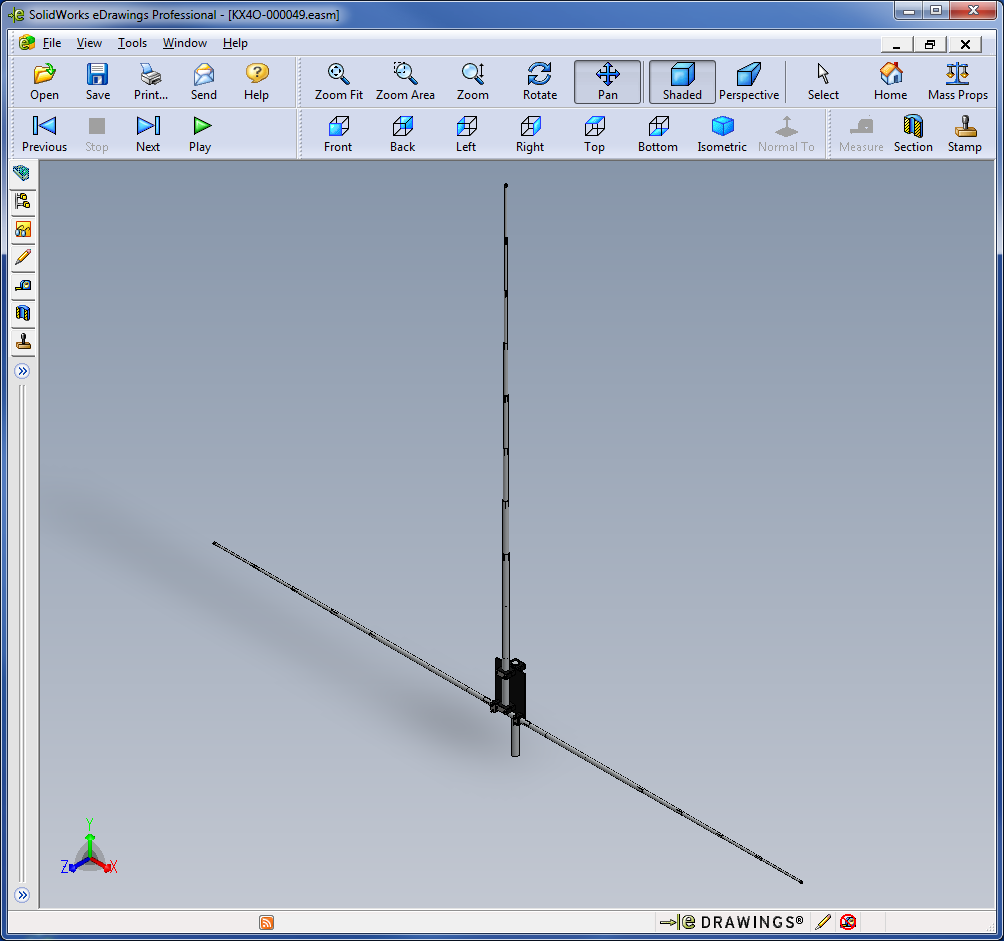Hanging Balun – waiting to break
Many comments flowed about the “dangling toroid choke” I placed on my original AHVD prototype as shown here…
I agree it is not optimal. If it isn’t obvious, the above hack is electrically very sound, but was attached to a spare piece of plastic quick fast to get something working soonest.
Choke Raising – a new hope
After ordering some more AHVD parts I decided to order an extra hub panel and use that as a choke/toroid mount. Having the same hole pattern, it simply fastens to the four bolts holding the vertical element so long as you make them long enough.
I wound a new toroid with RG58 using Jim Brown’s choke recipe for 20-10m for use with this experiment keeping the original RG316 for ultra-portable operation.
The following photos tell the story better than words.
Photos
Nothing hanging down anymore. Yes, one nut is missing, but 3 out of 4 isn’t too bad right?
It is important to note the nuts holding the vertical antenna element and speaker stand mast together are still the original ones directly against the big metal washer plate. This balun plate merely piggybacks on the existing AHVD assembly using the bolt portions protruding from the existing structural nuts; It forms no part of the main structure. This close in view reveals the idea more clearly…
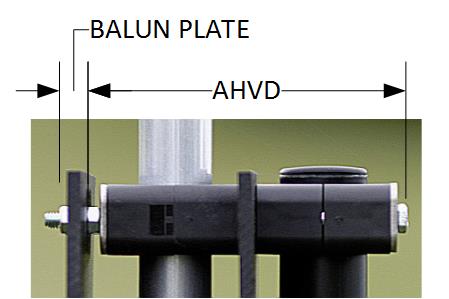
The portion marked AHVD is the original antenna hardware and is fully tensioned to hold the vertical and speaker mast together. The balun plate on the left is fastened loosely to the protruding bolts with additional nuts and is merely making good use of the handy mount points.
For portable operation this enclosed little space between the plates shouldn’t be too much trouble. I can see where insects might nest in here given enough time.
17m AHVD for Field Day 20m and 15m bands
Once again the Asymmetrical Hatted Vertical Dipole worked very well on the Get on the Air (GOTA) station at our Field Day site. We set the dimensions for 17m so we could use the radio’s matcher to tune up 20m and 15m. 10m was possible as well, but we have another antenna for that band. This plan worked well.
Another successful test of the AHVD complete.
Remote Tuner/Matcher?
By the way, there is no reason why a remote tuner can’t be bolted to this extra AHVD plate to alleviate the need to re-dimension the antenna for each band. If you dimension the AHVD to 17m or 15m, the tuner should have no trouble from 20m – 10m with decent antenna patterns as well. Details will flow in a future article.
